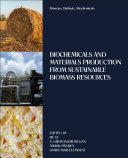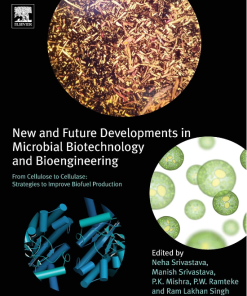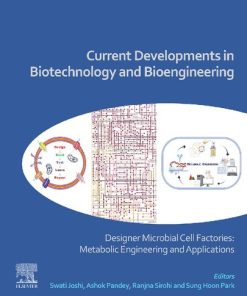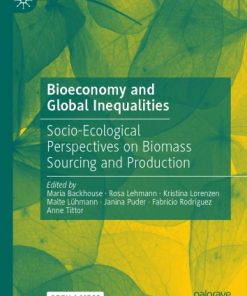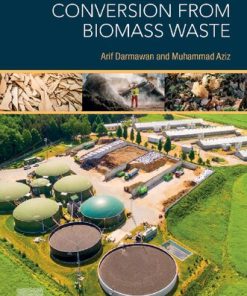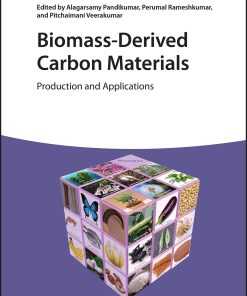Genetic and Metabolic Engineering for Improved Biofuel Production from Lignocellulosic Biomass 1st edition by Arindam Kuila, Vinay Sharma 0128179546 9780128179543
$50.00 Original price was: $50.00.$25.00Current price is: $25.00.
Genetic and Metabolic Engineering for Improved Biofuel Production from Lignocellulosic Biomass 1st edition by Arindam Kuila, Vinay Sharma – Ebook PDF Instant Download/DeliveryISBN: 0128179546, 9780128179543
Full download Genetic and Metabolic Engineering for Improved Biofuel Production from Lignocellulosic Biomass 1st edition after payment.
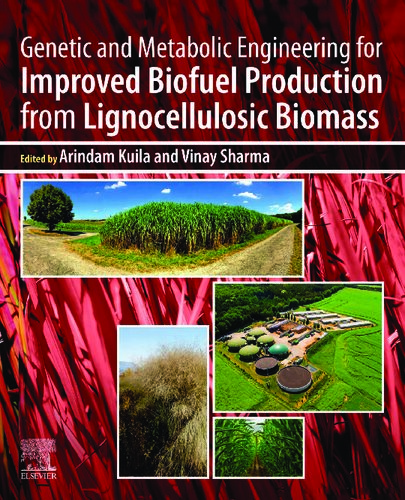
Product details:
ISBN-10 : 0128179546
ISBN-13 : 9780128179543
Author : Arindam Kuila, Vinay Sharma
Genetic and Metabolic Engineering for Improved Biofuel Production from Lignocellulosic Biomass describes the different aspects of biofuel production from lignocellulosic biomass. Each chapter presents different technological approaches for cost effective liquid biofuel production from agroresidues/biomass. Two chapters cover future direction and the possibilities of biomass-based biofuel production at the industrial level. The book provides a genetic and metabolic engineering approach for improved cellulase production and the potential of strains that can ferment both pentose and hexose sugars. The book also gives direction on how to overcome challenges for the further advancement of lignocellulosic biomass-based biofuel production.
Genetic and Metabolic Engineering for Improved Biofuel Production from Lignocellulosic Biomass 1st Table of contents:
Chapter 1: Biofuel production from lignocellulosic biomass: Introduction and metabolic engineering for fermentation scale-up
Abstract
1.1 Introduction
1.2 Renewable and fossil fuels
1.3 Raw materials for ethanol production
1.4 Metabolic engineering of microorganisms for conversion of lignocellulose sugars to ethanol
1.5 Metabolic engineering application to renewable resource utilization
1.6 Biofuels from lignocellulosic biomass
1.7 Lignocellulosic biomass
1.8 Metabolic engineering approaches for biofuel synthesis
1.9 Metabolic stresses beneath suboptimal ethnicity environment for balance fermentation
1.10 An integrated approach for biofuel fermentation industrialization with recent fermentation engineering
Chapter 2: Genetic and metabolic engineering approaches for improving accessibilities of lignocellulosic biomass toward biofuels generations
Abstract
Acknowledgments
2.1 Introduction
2.2 Genetic engineering approach to accelerate lignocellulosic biomass degradation
2.3 Metabolic regulation and engineering approach to accelerate lignocellulosic biomass degradation
2.4 Conclusion and future outlook
Abbreviation
Chapter 3: Present status and future prospect of genetic and metabolic engineering for biofuels from lignocellulosic biomass
Abstract
3.1 Introduction
3.2 Present status of metabolic and genetic engineering for biofuels from lignocellulosic biomass
3.3 Future prospect
3.4 Conclusion
Chapter 4: Downstream processing of biofuel
Abstract
4.1 Introduction
4.2 Production of biofuel from different biomasses
4.3 Downstream processing
4.4 Important aspects of various biofuels by downstream processing
4.5 Concluding remarks
Conflicts of interest
Chapter 5: Application of metabolic engineering for elimination of undesirable fermentation products during biofuel production from lignocellulosics
Abstract
5.1 Introduction
5.2 Lignocellulosics as an alternate substrate for biofuel production
5.3 Types of biofuels from lignocellulosic material
5.4 Biosynthetic pathways for production of different biofuels
5.5 Challenges in lignocellulosics biofuel production at industrial scale
5.6 Metabolic engineering approach for elimination of undesirable products during lignocellulosic biofuel production
5.7 Conclusion
Chapter 6: Molecular aspects of prokaryotic and eukaryotic cellulases and their modulation for potential application in biofuel production
Abstract
6.1 Introduction
6.2 Classification of cellulase
6.3 Sources of cellulase
6.4 Cellulase improvements and efforts
6.5 Mutagenic approach for development of cellulase producers (fungi)
6.6 Application of cellulase in lignocellulose-based ethanol production
6.7 Conclusion
Chapter 7: Genetic engineering: A tool for sustainable production of biofuel from lignocellulosic biomass
Abstract
7.1 Introduction
7.2 Techniques for the improvement of biofuel production
7.3 Conclusion
Chapter 8: Development of cellulolytic strain by genetic engineering approach for enhanced cellulase production
Abstract
Acknowledgments
8.1 Introduction
8.2 Hydrolytic enzymes employ in the degradation of lignocellulosic biomass (cellulase and xylanase)
8.3 Strategies used for enhancing hydrolytic enzyme production (cellulase and xylanase)
8.4 Economic outlook of hydrolytic enzymes and lignocellulose degradation
8.5 Conclusion and future prospects of hydrolytic enzyme production
Chapter 9: Development of cellulolytic thermotolerant fungal strain
Abstract
9.1 Cellulolytic fungal strains: an overview
9.2 Search for thermotolerant strains: a global need
9.3 Development of thermotolerant strains: innovative approaches and techniques
9.4 Future scope
Chapter 10: Xylose fermentation to bioethanol production using genetic engineering microorganisms
Abstract
10.1 Introduction
10.2 Xylose
10.3 Metabolism of microorganisms
10.4 Essential and desired requirements of microorganisms
10.5 Bacteria
10.6 Yeast
10.7 Limitations and challenges in xylose fermentation using genetic engineering microorganisms
10.8 Concluding remarks
Chapter 11: Production of biofuel through metabolic engineering: Processing, types, and applications
Abstract
11.1 Introduction
11.2 Metabolic engineering
11.3 Production of biofuels
11.4 Processing of biofuels
11.5 Types of advanced biofuels
11.6 Applications of advanced biofuels
11.7 Conclusion
Chapter 12: Present status and future prospect of genetic and metabolic engineering for biofuels production from lignocellulosic biomass
Abstract
Acknowledgment
12.1 Introduction
12.2 Types of fuels
12.3 Biomass recalcitrance
12.4 Biorefinery
12.5 Increasing tolerance against fermentation inhibitors
12.6 Future perspective
12.7 Conclusions
Chapter 13: Bioreactor design for efficient biofuels production from lignocellulosic biomass
Abstract
13.1 Introduction
13.2 Understanding lignocellulosic biomass
13.3 Cellulose
13.4 Hemicelluloses
13.5 Lignin
13.6 Raw material
13.7 Processing routes to bioethanol
13.8 Pretreatment
13.9 Physical pretreatment
13.10 Hydrolysis fermentation
13.11 Chemical pretreatment
13.12 Solvent pretreatment
13.13 Biological pretreatment
13.14 Conclusions
People also search for Genetic and Metabolic Engineering for Improved Biofuel Production from Lignocellulosic Biomass 1st
metabolic engineering vs genetic engineering
what is metabolic engineering
what is genetic engineering in medicine
what is metabolic genetics
genetic and metabolic disorders
Tags: Genetic, Metabolic Engineering, Improved Biofuel, Production, Lignocellulosic Biomass, Arindam Kuila, Vinay Sharma
You may also like…
Biology and other natural sciences - Ecology
Biology and other natural sciences - Biotechnology
Uncategorized
Engineering - Industrial Engineering & Materials Science
Biomass-Derived Carbon Materials: Production and Applications 1st Edition
Biology and other natural sciences - Genetics
Hacking Darwin: Genetic Engineering and the Future of Humanity Jamie Metzl
Business & Economics - Professional Finance
Basic Statistics for Risk Management in Banks and Financial Institutions 1st edition




